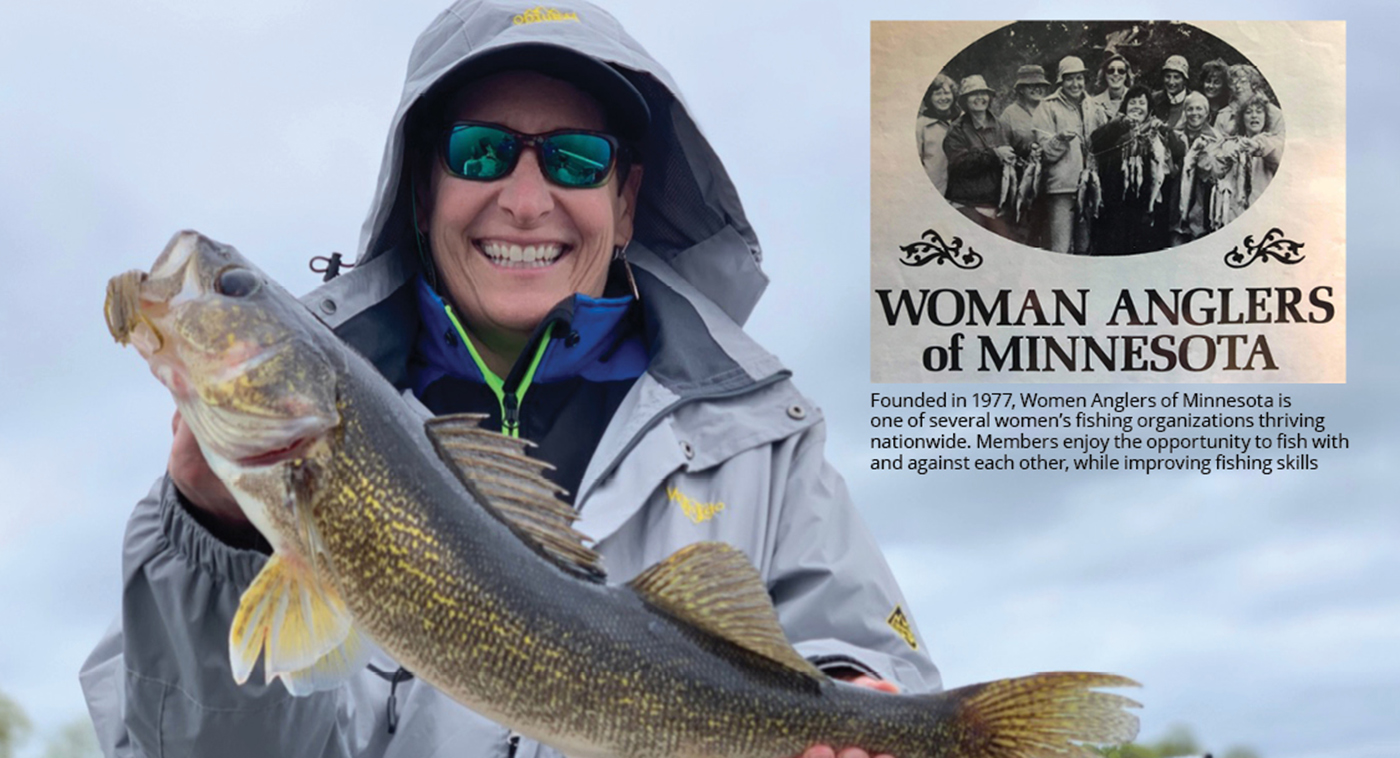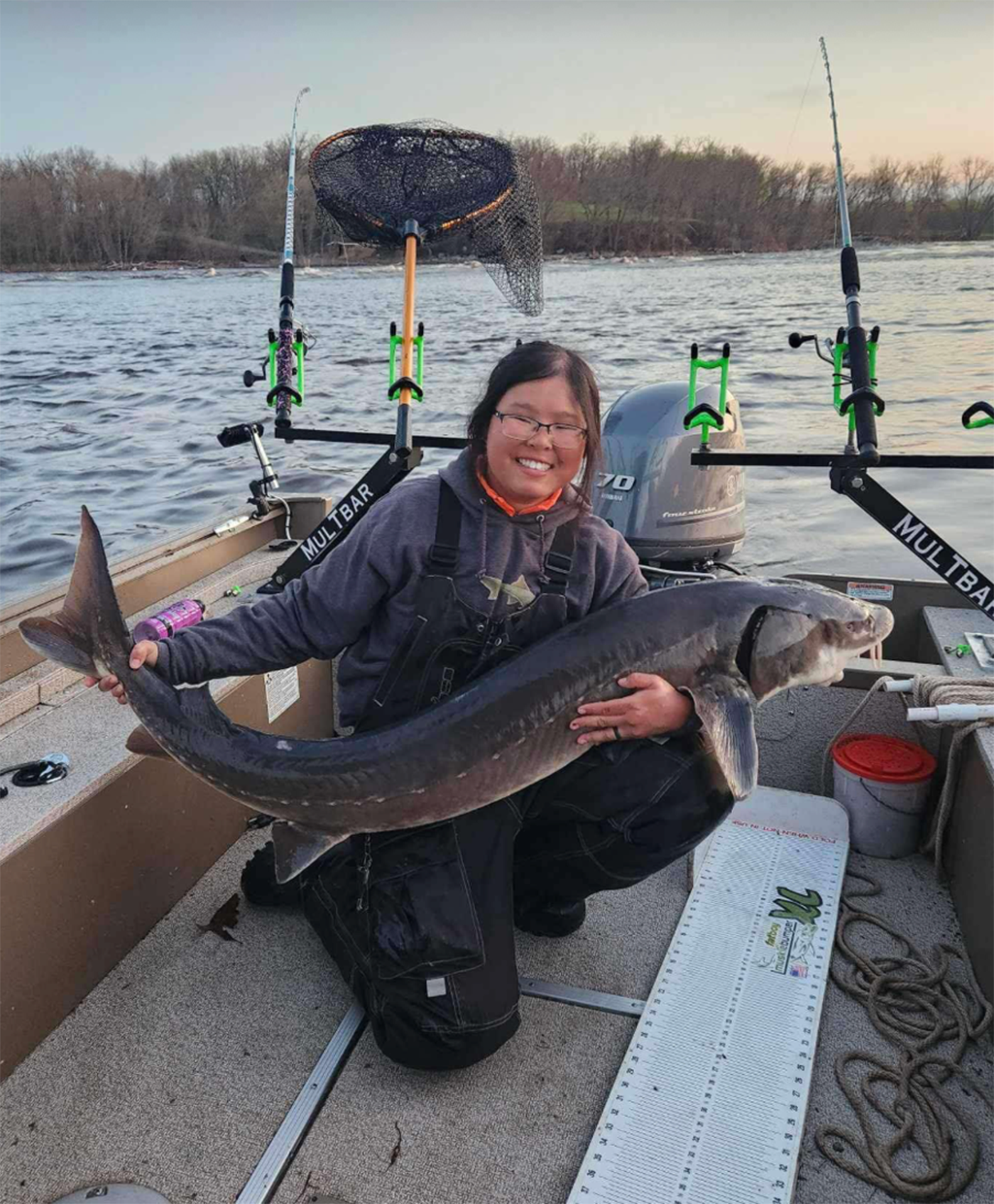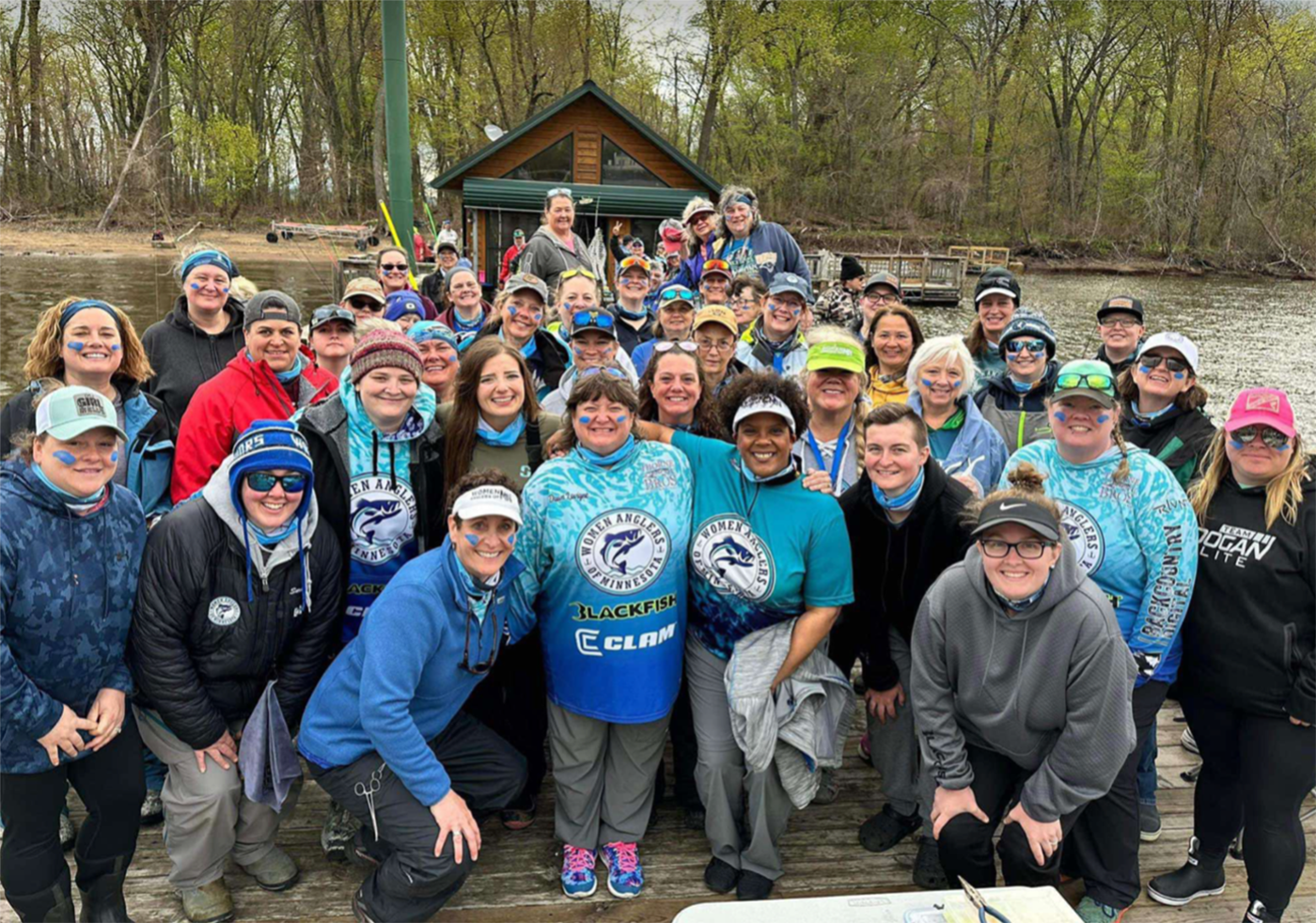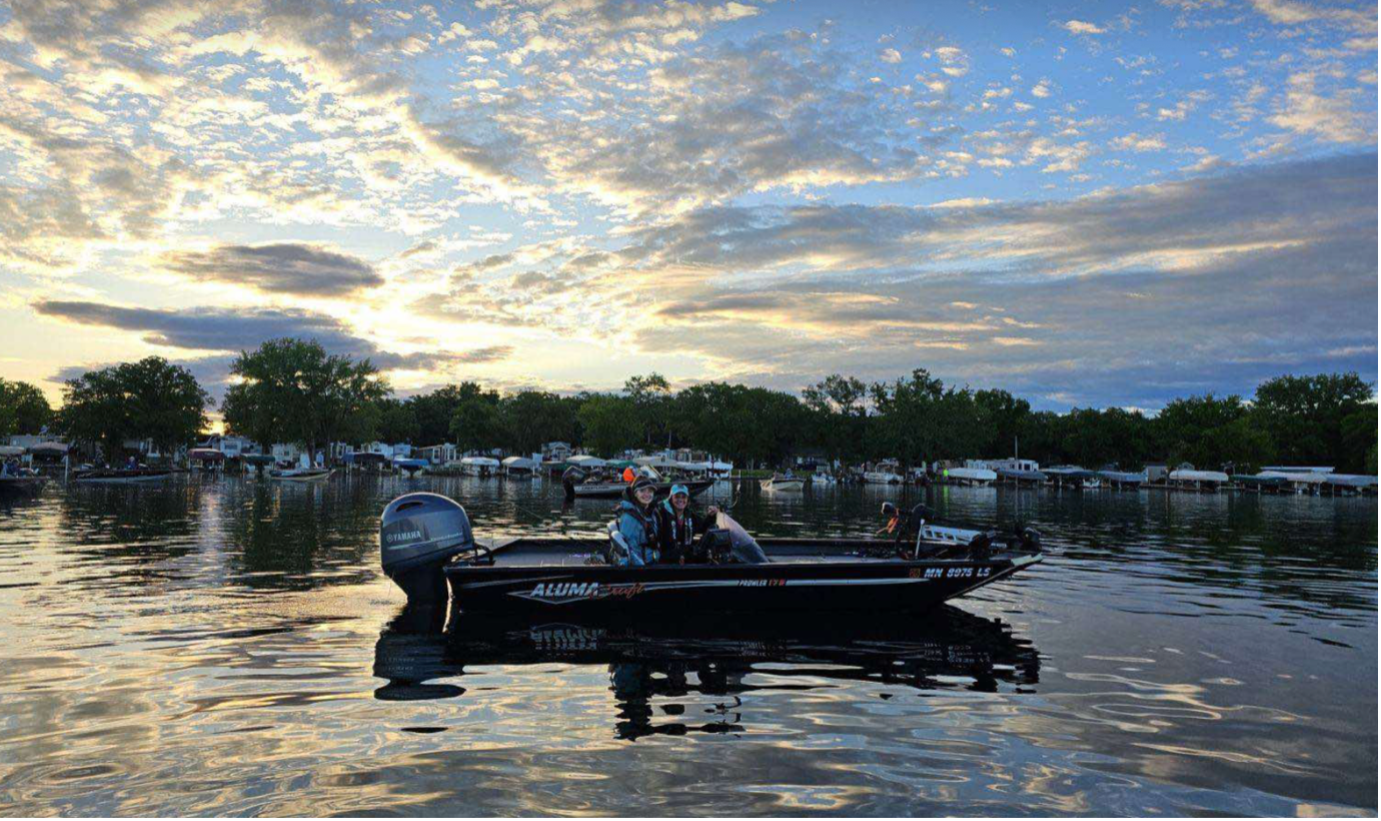Nearly 50 years ago, Minnesota angler Sybil Smith and six other women founded Women Anglers of Minnesota (WAM) after competing in a muskie fishing tournament. The group wanted to know if there were other women who liked to fish, get together and help each other become better anglers.
In 1977, they launched WAM. Their goals for the non-profit were modest in those early years and so was the size of the membership. Those who joined, however, enjoyed time spent with other women, in a supportive setting that was both educational and fun.

Smith, who became WAM’s first president, was a great choice to lead the organization in those formative years. A passionate angler, she was highly visible and well respected across the state. She published two popular fishing guides in the early 1980s and wrote regular articles on fishing for the state’s largest newspapers, the St. Paul Pioneer Press and the Minneapolis Star Tribune. At the time, it was uncommon for women to be seen as leaders in the fishing industry, with exceptions like fly angler Joan Wulff and B.A.S.S. CEO Helen Sevier, so Smith’s visibility served as bright light for other women at that time.
Today, WAM is one of the longest standing women’s fishing organizations in the nation. With more than 1,100 members, WAM hosts more than 25 events a year, including member tournaments, fishing trips, educational seminars like Knot Tying, and How to Trailer & Launch a Boat. As a non-profit, they give back generously to the community, supporting youth fishing initiatives, including 25 high school teams.

There are other groups including the International Women’s Fishing Association (www.iwfa.org) founded in 1955, Lady Bass Anglers Association (www.womensprobasstour.com), Women’s Fishing Federation (www.womensfishingfederation.org), Florida-based Ladies Let’s go Fishing (www.ladiesletsgofishing.com), Wisconsin Women Fish (https://wiwomenfish.com) and many more.
To find one that fits your interests and location, google “women’s fishing groups near me” and you will have several options to consider. Social media, especially Facebook, is another resource for finding other women with similar fishing interests.
Minnesota angler Michelle Morey was a passionate angler before she joined WAM six years ago. She now serves as president of the organization.
“I joined WAM after my kids were older and I had more time to fish. Even though I was a lifelong angler, I realized I had much to learn. My knowledge grew exponentially after joining WAM – from rigging tackle and discovering new lakes, to trailering and backing up a boat for the first time.”
“I found the group incredibly welcoming, regardless of skill level, and with nearly half the members owning boats, finding fishing partners became much easier. I no longer had to rely on asking my friends’ husbands to take me out because I gained the confidence and skills to go fishing on my own end.
Morey now owns her own boat and travels extensively to fish. In March, she heads to remote river in Guyana, South America, to pursue peacock bass.

Women Angler Numbers Exploding. Why?
There are some fascinating trends in American sportfishing participation over the past decade. Here are a few stats to ponder over your morning coffee: Per a recent report shared by the American Sportfishing Association, an impressive 54.5 million Americans went fishing in 2022 (the latest numbers available). Just a decade earlier, that number was 47 million.
Over that same 2012-2022 timespan, the number of women anglers in the US grew from 16 million to nearly 20 million, a growth spurt of nearly 4 million. And these women fish often, each averaging 15 fishing outings a year, a total of 293 million outings annually as a group.
Not only are women now a force in the tackle, boat, kayak, ice fishing and fishing travel markets, they are seeding the future of the sport. Studies have shown that adults with children in their households participate in fishing at a much higher level than
adults without children (22 versus 14 percent), introducing angling to millions of children annually.

Barriers To Women Anglers
In many households, especially in previous generations, fishing was a male dominated sport with dad taking their sons fishing, so daughters had little opportunity to experience fishing or learn to be proficient at it. That’s changing, but there are still barriers.
Morey has this to say for those sitting on the angling fence---“Don’t wait any longer to get on the water! If you want to try fishing for the first time, or get back in the sport like I did, you’ll find that getting started is easier than you think. Of course, I’d recommend joining a group like WAM, but if you are not one to join a group you can find everything you need in terms or gear and knowledge online.”
Back to Blue Life
In 1977, they launched WAM. Their goals for the non-profit were modest in those early years and so was the size of the membership. Those who joined, however, enjoyed time spent with other women, in a supportive setting that was both educational and fun.

Smith, who became WAM’s first president, was a great choice to lead the organization in those formative years. A passionate angler, she was highly visible and well respected across the state. She published two popular fishing guides in the early 1980s and wrote regular articles on fishing for the state’s largest newspapers, the St. Paul Pioneer Press and the Minneapolis Star Tribune. At the time, it was uncommon for women to be seen as leaders in the fishing industry, with exceptions like fly angler Joan Wulff and B.A.S.S. CEO Helen Sevier, so Smith’s visibility served as bright light for other women at that time.
Today, WAM is one of the longest standing women’s fishing organizations in the nation. With more than 1,100 members, WAM hosts more than 25 events a year, including member tournaments, fishing trips, educational seminars like Knot Tying, and How to Trailer & Launch a Boat. As a non-profit, they give back generously to the community, supporting youth fishing initiatives, including 25 high school teams.

There are other groups including the International Women’s Fishing Association (www.iwfa.org) founded in 1955, Lady Bass Anglers Association (www.womensprobasstour.com), Women’s Fishing Federation (www.womensfishingfederation.org), Florida-based Ladies Let’s go Fishing (www.ladiesletsgofishing.com), Wisconsin Women Fish (https://wiwomenfish.com) and many more.
To find one that fits your interests and location, google “women’s fishing groups near me” and you will have several options to consider. Social media, especially Facebook, is another resource for finding other women with similar fishing interests.
Minnesota angler Michelle Morey was a passionate angler before she joined WAM six years ago. She now serves as president of the organization.
“I joined WAM after my kids were older and I had more time to fish. Even though I was a lifelong angler, I realized I had much to learn. My knowledge grew exponentially after joining WAM – from rigging tackle and discovering new lakes, to trailering and backing up a boat for the first time.”
“I found the group incredibly welcoming, regardless of skill level, and with nearly half the members owning boats, finding fishing partners became much easier. I no longer had to rely on asking my friends’ husbands to take me out because I gained the confidence and skills to go fishing on my own end.
Morey now owns her own boat and travels extensively to fish. In March, she heads to remote river in Guyana, South America, to pursue peacock bass.

Women Angler Numbers Exploding. Why?
There are some fascinating trends in American sportfishing participation over the past decade. Here are a few stats to ponder over your morning coffee: Per a recent report shared by the American Sportfishing Association, an impressive 54.5 million Americans went fishing in 2022 (the latest numbers available). Just a decade earlier, that number was 47 million.
Over that same 2012-2022 timespan, the number of women anglers in the US grew from 16 million to nearly 20 million, a growth spurt of nearly 4 million. And these women fish often, each averaging 15 fishing outings a year, a total of 293 million outings annually as a group.
Not only are women now a force in the tackle, boat, kayak, ice fishing and fishing travel markets, they are seeding the future of the sport. Studies have shown that adults with children in their households participate in fishing at a much higher level than
adults without children (22 versus 14 percent), introducing angling to millions of children annually.

Barriers To Women Anglers
In many households, especially in previous generations, fishing was a male dominated sport with dad taking their sons fishing, so daughters had little opportunity to experience fishing or learn to be proficient at it. That’s changing, but there are still barriers.
- Boat ownership or access to a boat: for many women owning or operating a boat is beyond their means or skill level. For this reason, WAM highlights fishing opportunities available from shore, piers or fishing floats, on ice, or with easy-to-handle kayaks.
- Education—Launching a boat, selecting the right tackle and learning how to fish are all skills learned from others, at least initially. Today, beginning anglers have easy access to how-to content covering most aspects of fishing. Also, groups like WAM work hard to offer education in settings that welcome anglers of all skill levels.
- Role Models—In 1977, finding role models for female anglers was challenging, but today there are women anglers building great content, competing in national fishing tournament circuits or simply showing other women that fishing is something you can do, with others or not. Groups like WAM deserve at least some of the credit, so it’s not surprising that their membership, like the number of women anglers, has grown substantially over the past decade. WAM members provide a cross section of skills and age…the youngest member is eight years old and the oldest, Gladys Mellum, turned 100 this year.
Morey has this to say for those sitting on the angling fence---“Don’t wait any longer to get on the water! If you want to try fishing for the first time, or get back in the sport like I did, you’ll find that getting started is easier than you think. Of course, I’d recommend joining a group like WAM, but if you are not one to join a group you can find everything you need in terms or gear and knowledge online.”
Back to Blue Life
